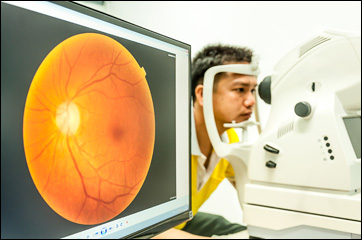CV risk factors visible in retinal images

Retinal fundus photographs were used to predict CV risk factors, according to a study published in Nature Biomedical Engineering.
“There are sophisticated noninvasive tests for cardiovascular risk, such as coronary calcium CT scans,” Lily Peng, researcher of machine intelligence at Google, told Cardiology Today. “If future research pans out, we do hope that the simpler technique of retinal fundus photography could also give additional information about cardiovascular risk noninvasively, but a lot of scientific work remains.”
Ryan Poplin, machine learning technical lead at Google, and colleagues analyzed data from 284,335 patients from the UK Biobank (n = 48,101; mean age, 57 years) and EyePACS datasets (n = 236,234; mean age, 55 years). Results were then validated by images from two different datasets: 12,026 patients from the UK Biobank and 999 patients from EyePACS.
Retinal images were used to predict CV risk factors such as gender (area under the receiver operating characteristic curve [AUC] = 0.97), age (mean absolute error within 3.26 years; 95% CI, 3.22-3.31), systolic BP (mean absolute error within 11.23 mm Hg), smoking status (AUC = 0.71) and major adverse cardiac events (AUC = 0.7).

In trained deep-learning models, features such as blood vessels or the optic disc were used to produce each risk prediction.
“We look forward to developing and testing our algorithm on larger and more comprehensive datasets,” Peng said in an interview. “To make this useful for patients, we will be seeking to understand the effects of interventions such as lifestyle changes or medications on our risk predictions and we will be generating new hypotheses and theories to test.” – by Darlene Dobkowski
For more information:
Lily Peng can be reached at lhpeng@google.com.
Disclosure: The authors report they are employees of Google and Verily Life Sciences.
